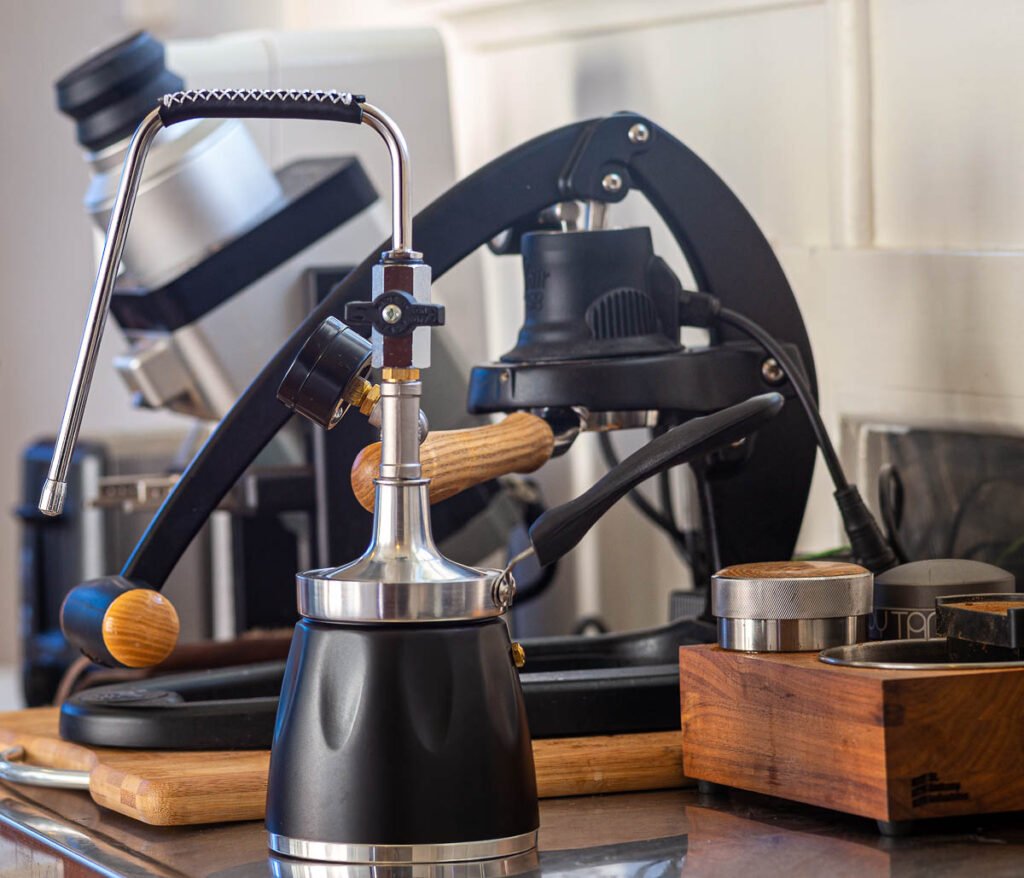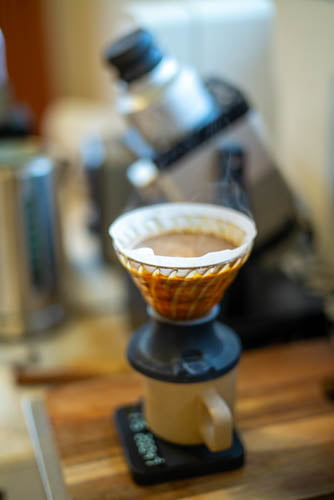
How to Master the Art of Making the Perfect Cup of Coffee
How to Master the Art of Making the Perfect Cup of Coffee is about getting the right recipe (level of extraction) for your roast level.
Under-extracted coffee is sour, and over-extracted coffee is bitter.
You can easily and quickly make better coffee using recipes on this site.
Don’t waste half the bag of beans trying to make a nice cup of coffee.
Density.coffee gives you:
- Recipes: Instead of one recipe that can’t work for every roast level, density.coffee provides 158 recipes that cater to every roast level. The recipes use SCA standards. They are the recipe adjustments that a very experienced barista would use.
You can read more about Roast Levels and Recipes here. - Adjustments: Grind size changes are great for getting your extraction time about right, but they are terrible for changing the level of extraction. They can’t cover the extraction requirements for the full range of roast levels, making dialling in difficult and often impossible.
Changing the recipe is much more effective, caters to the entire roast level range, and is quick. - Starting recipe: Instead of always using the same recipe that will probably only work less than 10% of the time, you can find an initial recipe that probably will work 68% of the time and 95% of the time only requires a single recipe change, reducing dialling in time.
- Taste: The biggest benefit is that you are finally using your taste buds to adjust the coffee. You find the recipe that tastes the best.
Resulting in better tasting coffee.
As Lucia Solis says, “Life’s too short to drink bad coffee.”
Collectively, this method of extracting coffee with the help of recipes generated by density measurements, adjustments by density, starting recipe by density, is named Density Assisted Extraction (DAE). A catchy acronym like WDT or RDT 😉

Extracting coffee is much like cooking meat.
- Fillet steak is beautiful if seared for a few minutes on each side.
- Brisket is beautiful if slow-cooked for 6 hours.
Using one fixed recipe for cooking all meat will not produce the best result.
Coffee is no different.
- Dark-roasted coffee is not very dense. It is pretty brittle; you can crush it with your fingertips. The fixed recipe is likely to over-extract and make very bitter coffee.
- Light-roasted coffee is very dense; a hammer will bounce off it. It is hard to extract. The fixed recipe is likely to under-extract and make sour coffee.
Using one fixed recipe for extracting all coffee will not produce the best result for every coffee.
Density.Coffee provides 158 recipes, and if you choose to measure your bean density, you can, in less than 1 minute, select the recipe likely to suit your beans.
Why does measuring density make better coffee?

Easy coffee recipes to make at home
One hundred fifty eight recipes ordered from extract the least (1) to extract the most (158), where the extraction required is scaled to match the Roast Level.
Measuring the roasted coffee density will provide a much better-starting recipe for your coffee extraction than using one fixed recipe every time.
If you are interested in the density range and the calculations that generate the 158 recipes, read more here.

How to dial in coffee
Grinding finer will extract more, but you can’t go far before it chokes the shot.
Grinding coarser will extract less, but you can’t go far before there is not enough puck pressure and the shot runs too fast. However, changing the recipe changes every extraction variable. It is a more effective adjustment that makes dialing in your coffee much quicker and easier.
How to use this site
The dialing-in method with DAE is unique. When you taste the coffee:
– if the coffee is sour, you extract quite a bit more by next trying a recipe 20 places up the series.
– if the coffee is bitter, you extract quite a bit less by next trying a recipe 20 places down the series.
There are two methods of using the site:
Method 1: Without a 100ml cylinder. You don’t have to measure your coffee beans’ density. Use the default (median) starting recipe of 400 (0.400g/ml recipe #80).
68% of the roasted coffee on the planet falls within three tries in either direction, using the Extract More or Extract Less buttons. The remaining 30% of coffees may take up to a total of 5 attempts with this method. But at least you can try the recipes with no extra gear. You don’t have to make the coffees all in one go; just mentally note the result and what you want to try next time.

Method 2: With a 100ml cylinder and 0.1g scales. Making a great coffee is much quicker if you get a 100ml cylinder because 68% of the time, you will make a brilliant coffee on the first attempt — 95% with up to one adjustment and 99% with up to two adjustments.

In this example, your measured density is 0.377 g/ml. Entering 377 in the form above gives you a starting recipe of #57.
There is a 68% probability that this recipe will be correct the first time because it is based on a density measurement of your beans.
Chances are it still could be off 30% of the time, but you will already be in the right ballpark, so 95% of the time, you will only need a single recipe change, either up or down.
Method 2 can be up to 5 times faster than method 1. This is a huge return on investment for a tool that is cheap and quick to use. Method 2 has the added benefit of your measurements further improving the density.coffee model. The more measurements entered, the more accurate the model gets, making better recipes.
The huge advantage of the series of recipes is that they help you fully utilise all your extraction tools to their fullest capacity – without having years of barista training. And you always end up with a coffee that tastes the best, the least sour and the least bitter. The best recipe for your coffee. A revelation.
If you start measuring your own density, the system is super-fast to find the best recipe.
DAE, it’s a revolution in making coffee.
Fill in the form
Get the recipe by entering your measured density into the calculation form and clicking Submit.
Select method
Select from Espresso, Filter, Aeropress, or Hario Switch.
Make your initial coffee
Using the recipe provided, make your first coffee.
Taste it
Empirically, 68% of the time, the coffee extraction will be correct on the first try. 95% works after one adjustment. 99.7% works after two adjustments.
All you need to decide is:
- Is it too sour, like lemon? In this case, you need to extract more.
- Is it OK? You don’t need to change anything. Some refer to this as the sweet spot, but coffee doesn’t contain sugar, so think of this as the calm between too sour and too bitter.
- Is it too bitter? All coffee is bitter to some extent, but you can reduce the bitterness by extracting less.
Adjustments
Either
- Use the Extract More button (adds 20 to the measured density).
- Use the Extract Less button (subtract 20 from the measured density).
So easy
Testimonials



